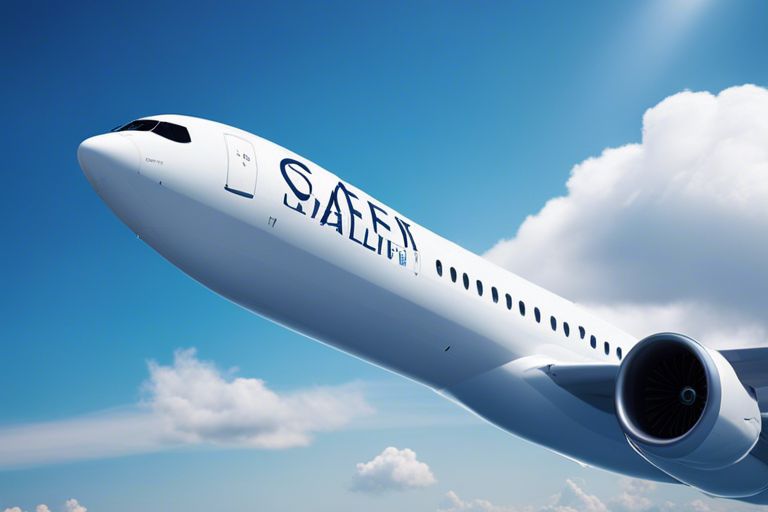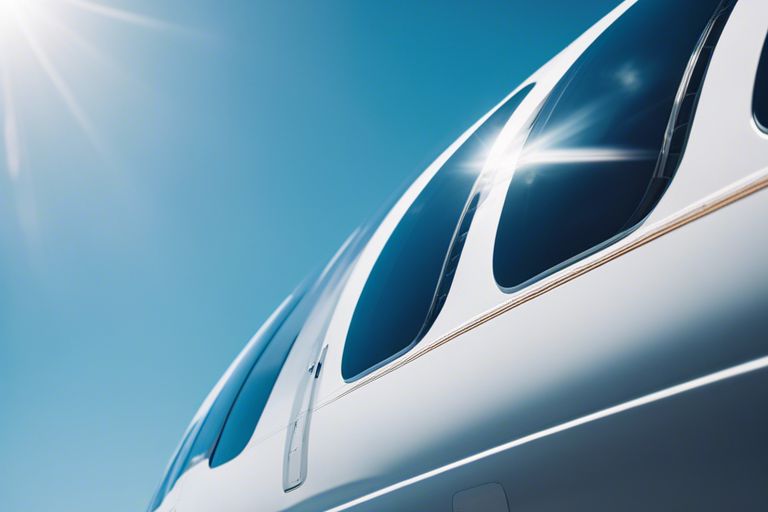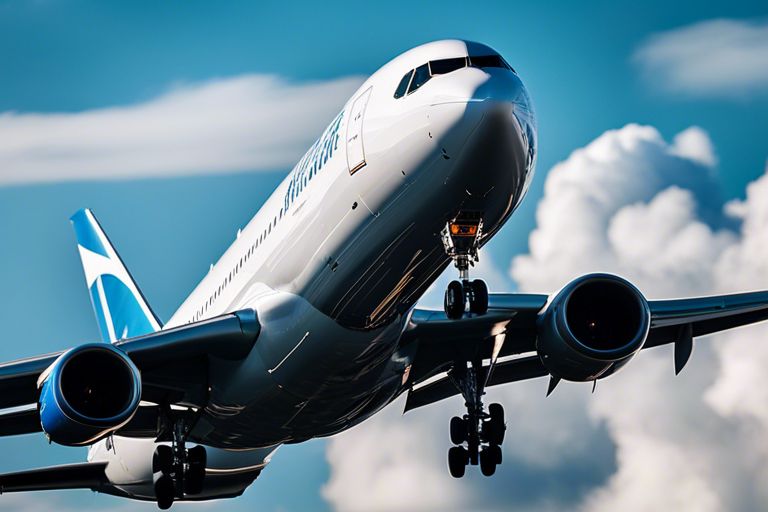Table of Contents
You might be wondering which airline you should choose for your next travel adventure, given all the news about flight incidents. When it comes to safety, it’s essential to do your research and find the safest airline possible. After all, you want to make sure that you and your loved ones are in good hands when you’re thousands of feet in the air. In this blog post, we’ll take a closer look at the safest airlines in the world and what sets them apart. We’ll dive into their safety records, fleet age, and other crucial factors you should consider when booking your next flight. By the end of this post, you’ll be equipped with the knowledge you need to make a well-informed decision and ensure a safe and comfortable journey.
Key Takeaways:
- Safety rankings: According to various industry reports and ratings, top airlines with the best safety records include Qantas, Air New Zealand, Eva Air, Etihad Airways, and Emirates.
- High safety standards: The safest airlines in the world prioritize safety at every level, including rigorous aircraft maintenance, comprehensive crew training, and strict adherence to safety regulations.
- Investment in modern aircraft: Many of the safest airlines regularly update their fleets with the latest technology and safety features, ensuring a lower risk of accidents or incidents.
- Consistent safety performance: These top airlines have a proven track record of safe operations over many years and have received numerous accolades and certifications for their commitment to safety.
- Transparent safety culture: The safest airlines are known for their openness and transparency when it comes to safety issues, regularly communicating with passengers about safety measures and protocols.

Methodologies for Assessing Airline Safety
Any time you are considering which airline to choose for your next trip, it’s important to do your research and consider the safety record of the airlines in question. There are several methodologies and criteria used to assess airline safety, and understanding these can help you make an informed decision about which airline to trust with your travels.
Official Safety Ratings and Certifications
When assessing the safety of airlines, one of the key methodologies is the consideration of official safety ratings and certifications. These can be issued by aviation authorities or governing bodies, and often take into account a wide range of factors including accident history, regulatory compliance, and operational safety standards. Safety certifications such as the International Air Transport Association (IATA) Operational Safety Audit (IOSA) can provide you with valuable insights into an airline’s safety performance and help you make an informed decision about which airline to fly with.
Independent Safety Audits and Reviews
In addition to official safety ratings and certifications, independent safety audits and reviews also play a crucial role in assessing airline safety. Independent organizations and agencies conduct detailed assessments of airline operations, maintenance, pilot training, and compliance with safety regulations. These audits and reviews provide an unbiased evaluation of an airline’s safety performance, giving you the peace of mind that comes with knowing that you are choosing an airline that has been thoroughly scrutinized and meets the highest safety standards.
By understanding these methodologies for assessing airline safety, you can make an informed decision about which airline to trust with your travels. Always prioritize airlines that have obtained official safety certifications and have passed independent safety audits to ensure the highest level of safety for your journey.
Factors Influencing Airline Safety
One of the most crucial factors influencing airline safety is the track record of the airline. You should consider the airline’s safety history, including any past incidents or accidents, as well as their safety policies and procedures. Additionally, the overall safety rating assigned to an airline gives you a good indication of their commitment to safety standards. You can find the latest rankings and safety assessments of airlines on reputable sources such as CNBC’s article on the Top 10 safest airlines in the world for 2023, which can help you make an informed decision when choosing a safe airline.
Pilot Training and Experience
When it comes to airline safety, the training and experience of the pilots are paramount. You want to be assured that the pilots operating your flights have undergone rigorous training and have accumulated a significant amount of flying hours. This level of experience and expertise greatly contributes to the safety of your flight. Recognizing the importance of this factor can give you peace of mind knowing that you are in capable hands.
Aircraft Maintenance and Age
Aircraft maintenance and age are critical factors affecting flight safety. Ensure that the airline you choose has a reputation for adhering to strict maintenance schedules and employs qualified maintenance personnel. Additionally, you should consider the age of the aircraft in the airline’s fleet. Newer aircraft are equipped with the latest safety technology and are subject to stringent safety regulations, reducing the likelihood of mechanical issues during your flight.
Top-Ranked Airlines for Safety
To find the safest airlines in the world, you can look at various ranking systems that take into account factors such as overall safety record, regulatory compliance, and operational history. These rankings are based on in-depth analysis of safety data and industry standards to determine which airlines consistently demonstrate a strong commitment to safety. When it comes to the top-ranked airlines for safety, you can have peace of mind knowing that you are in good hands when flying with these reputable carriers.
Historical Safety Performance
When assessing an airline’s safety, it’s important to consider its historical safety performance. This includes looking at the number of accidents, incidents, and fatalities over a period of time. Airlines with a strong track record of safety demonstrate a commitment to maintaining high safety standards and implementing measures to prevent accidents and incidents. After all, your safety is their top priority, and this is reflected in their historical safety performance.
Recent Safety Records and Achievements
Another key aspect to consider is an airline’s recent safety records and achievements. This includes factors such as the implementation of advanced safety technologies, pilot training and certification programs, and safety management systems. Airlines that continually invest in enhancing safety measures and achieving safety milestones demonstrate a dedication to ensuring your safety throughout your journey. This commitment to excellence plays a crucial role in maintaining their position as a top-ranked airline for safety.
Improving Safety Standards
Keep in mind that the safest airlines in the world are always striving to improve safety standards to ensure the well-being of their passengers and crew. This includes embracing technological advancements and adapting to regulatory changes and best practices in the aviation industry.
Technological Advancements
One way airlines improve safety is through the use of advanced technology. From state-of-the-art flight control systems to enhanced aircraft maintenance and monitoring, technological advancements play a crucial role in ensuring the safety of every flight. These advancements help pilots navigate through challenging weather conditions, minimize the risk of human error, and provide real-time data on the status of the aircraft, ultimately enhancing the overall safety of air travel.
Regulatory Changes and Best Practices
Another key aspect of improving safety standards is staying abreast of regulatory changes and best practices in the aviation industry. Airlines must continuously update their operations and procedures to comply with the latest safety regulations and industry standards. This includes regular training for pilots and crew, implementing safety management systems, and adhering to best practices for aircraft maintenance and inspections. By following these guidelines, airlines can proactively identify and address potential safety hazards, minimizing the risk of incidents or accidents.

Conclusion
Drawing together all the safety records and reviews from various sources, it is clear that your safest airline in the world is consistently ranked as one of the top performers in terms of safety. With a strong focus on rigorous maintenance and regular safety checks, you can fly with confidence knowing that your safety is paramount to them. Remember to always prioritize safety when choosing an airline for your travels, and by choosing the safest airline, you can help ensure a smooth and worry-free journey to your destination.
FAQ
Q: What is considered the safest airline in the world?
A: According to various safety rankings and reports, as of [current year], Qantas is often considered one of the safest airlines in the world. It has a strong safety record and is known for its high safety standards and maintenance practices.
Q: What factors contribute to an airline being considered the safest?
A: Several factors contribute to an airline being considered the safest, including its safety record, use of modern aircraft, adherence to strict maintenance regulations, pilot training and experience, and implementation of advanced safety technologies.
Q: How can I find information on the safety record and reputation of an airline?
A: You can find information on the safety record and reputation of an airline by researching safety rankings and reports by aviation organizations and regulatory bodies. Additionally, you can review accident and incident reports, as well as customer reviews and testimonials to gauge the overall safety performance of an airline.

